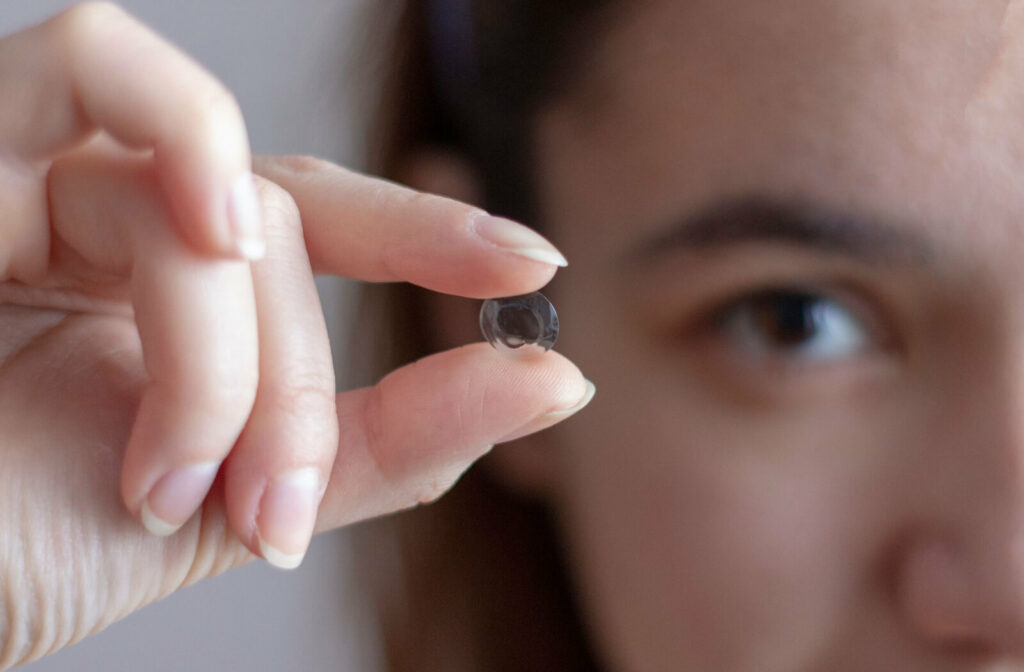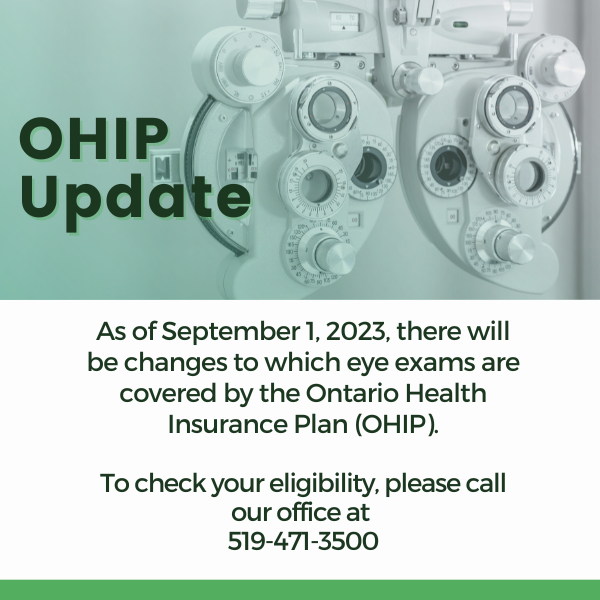Ortho-k lenses are a type of specialty contact lens available from your eye doctor. Dry eyes due to contact lens wear or myopia in children are 2 situations where ortho-k lenses may be a great treatment option. Because of their unique design and how they gently reshape the cornea with overnight wear, ortho-k lenses are able to address issues standard soft contact lenses may not be able to.
These highly oxygen-permeable contact lenses can be effective in preventing or minimizing the need for additional correction for an adult’s or child’s vision during the day. After an eye examination, your eye doctor should be able to discuss whether you or your child is a candidate for ortho-k contact lenses.
What Are Ortho-K Lenses?
Ortho-k, also known as orthokeratology, is a nonsurgical and noninvasive corneal refractive therapy (CRT). Ortho-k contact lenses are rigid gas-permeable lenses designed to be worn overnight.
Their construction is rigid enough to gently reshape the cornea, which can prevent the need for wearing glasses or contact lenses during the day. The corneal reshaping from ortho-k lenses is a similar process to a laser refractive surgery such as LASIK.
A concern that some people have is wearing contact lenses overnight. But these gas-permeable lenses are designed to allow enough oxygen to pass into the eye, making them safe for overnight wear—even for a child.
Getting Fitted With Ortho-K Lenses
Before your eye doctor can fit you with ortho-k contact lenses, they will need to perform an exam of your eyes to ensure they are healthy. The exam will typically be similar to a standard contact lens exam and fitting, where your eye doctor takes various measurements of the eye.
This ensures a custom fit for the ortho-k lenses. Additionally, after you’re fit for these unique lenses, your eye doctor will usually schedule you for follow-up appointments to make sure there are no issues with the fit.
Caring for Ortho-K Lenses
The exact instructions for wear and care may vary slightly, depending on why you’re wearing them. Ortho-k contact lenses have undergone safety testing, but like any other contact lens, issues like bacterial keratitis can be a problem.
Proper handwashing and lens care go a long way to preventing these contact lens issues. If your child is wearing ortho-k lenses, it’s important to ensure they understand the importance of good hygiene when touching their eyes.
What Are Ortho-K Lenses Used For?
Overnight ortho-k contact lenses are essentially used to prevent or minimize the need for vision correction during the day in 1 of their primary applications. This provides a unique opportunity to provide relief for someone suffering from dry eye disease.
An ortho-k lens helps keep the eye hydrated overnight—then contact lenses aren’t needed the next day, which many people suffering from dry eyes cannot wear.
Another common use for orthokeratology is for myopia control. Researchers determined that ortho-k lenses slowed myopic progression in children by up to 56% compared to normal contact lenses or eyeglasses wearers.
Overview of Myopia Control
Myopia, also known as nearsightedness, is a refractive error that causes distant objects to appear blurry and nearby objects to be clear. This condition currently affects approximately 30% of the population and is expected to grow in prevalence. Plus, it seems to be developing earlier in childhood.
In addition to ortho-k lenses reducing or eliminating the need for other correction measures, research indicates that these unique lenses can actually slow the changes in the eye affecting its axial growth.
Importance of Dealing With Myopia
Our eyes are typically done growing in size by our early 20s. This doesn’t mean they don’t change anymore, but myopia stops developing at this point. For a mild case of myopia, there may not be any problems other than the potential inconvenience of wearing glasses or contact lenses.
But more severe cases of myopia—called high myopia—can lead to several eye diseases or conditions. If something like glaucoma or retinal detachment happens, treatment typically involves much more than a pair of glasses or contact lenses.
Long-term eye health would be one of the primary reasons that we should visit the eye doctor for eye examinations on the recommended schedule, which is every 1 to 2 years for most people depending on age and eye health.
Discuss Correction Options With Your Eye Doctor
Seeing clearly is an important part of a child’s growth, and their vision can impact learning and social development. No one should have to choose between comfort and clear vision. Including your eye doctor in your family’s life is a great step toward crisp, clear vision and healthy eyes.
Give us a call at Byron Optometry today. Our professional team can book you an appointment with one of our eye doctors. They can answer your questions about ortho-k contact lenses and review any other potential options available to help you reach your vision goals.



